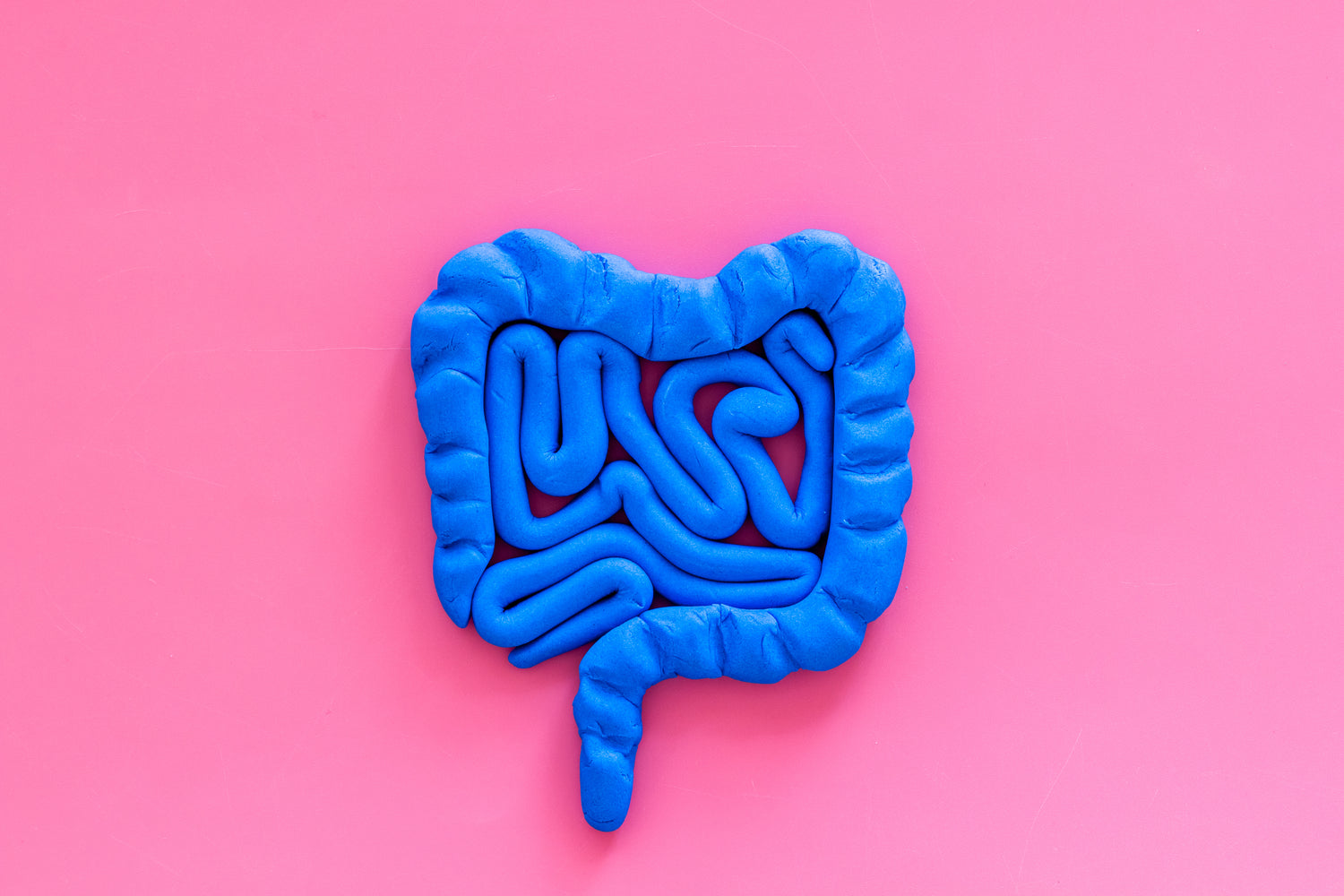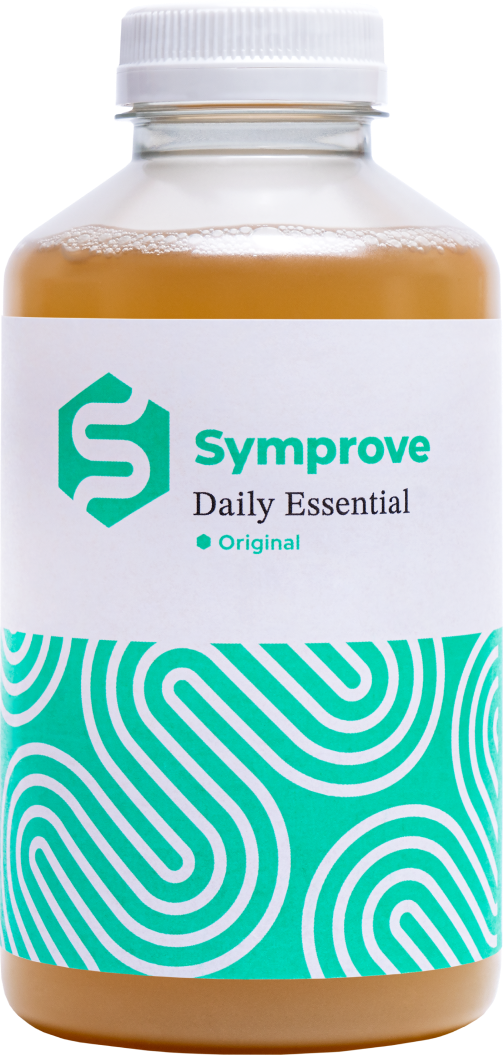An introduction to the immune system
The immune system protects the body against infectious diseases caused by pathogenic bacteria and viruses.1 70% of the body’s entire immune system resides along the gastrointestinal tract and is continuously exposed to more antigens (a molecule which induces an immune response e.g. food components, bacteria) than any other part of the body.2,3
Innate and adaptive immunity
The immune system can be separated into innate and adaptive immunity. The innate immune system provides immediate defence against infection and consists of physical and chemical barriers (e.g. the skin, mucosal membranes) which prevent the invasion of pathogens.
The adaptive immune system acquires information upon exposure to the threat (an antigen) before activating an immune response. This is known as immunological memory and it is used in vaccine therapy to protect against specific strains of disease.4 The key components of the innate and adaptive immune system are listed in the table below.5
Innate immunity versus adaptive immunity2
| Attribute | Innate Immunity | Adaptive Immunity |
|---|---|---|
| Response Time | Minutes, hours | Days |
| Specificity | Not specific – only able to identify general pathogens or foreign particles | Highly specific response – able to target specific pathogens |
| Cells Involved | Macrophages, neutrophils, natural killer cells, dendritic cells, basophils, eosinophils | T cells, B cells, antigen-presenting cells (e.g. dendritic cells) |
| Key Components | Antimicrobial peptides and proteins | Antibodies |
| Ability to distinguish between host cell and pathogen | Able to do this effectively | Overreaction can result in an inability to distinguish between host cell and pathogen, leading to autoimmune disorders |
| Immunological Memory | None | Immunological memory means an effective response to recurrent infections |
The interaction between the gut and the immune system
The gut lining consists of a single non-penetrable layer of intestinal epithelial cells covered by a layer of mucus and antimicrobial proteins which forms a protective barrier against pathogens.
Below the gut lining lies the largest mass of lymphoid tissue in the human body, a dense and complex network of immune cells (innate and adaptive), collectively known as gut-associated lymphoid tissue (GALT). Its role is to maintain the fine balance between tolerance and triggering an immune response by efficiently discriminating between the harmful and harmless.
Intestinal epithelial cells form the barrier that ‘separate’ the gut microbiota and GALT, and play a key role in mediating crosstalk between these two entities. For example, epithelial cells produce signalling molecules (e.g. cytokines) in reaction to gut microbes or their metabolites which can induce T cells responses, or they can process and present antigens to antigen-presenting cells residing just below the epithelial lining. This bi-directional communication is crucial for mucosal homeostasis.6
Secretory immunoglobulin A (SIgA) is a key feature of the mucosal immune system, its main role being immune exclusion at the mucosal surface, that is, promoting the clearance of pathogens by blocking their access and preventing attachment to epithelial cells.
Dysbiosis and disease
Altered microbial diversity in the gut microbiome is a marker of dysbiosis, which can cause changes to the immune response and increases susceptibility towards disease.6
Chronic inflammatory disease
Changes in gut microbiota can impair the immune response. In a large cohort of patients with newly diagnosed Crohn’s disease (a subtype of inflammatory bowel disease), altered gut microbiota was identified. Increased abundance of Enterobacteriaceae, Pasteurellacaea, Veillonellaceae, and Fusobacteriaceae alongside decreased abundance of Erysipelotrichales, Bacteroidales, and Clostridiales was found to strongly correlate with disease status.7
Autoimmune disease
Gut dysbiosis is frequently associated with autoimmune conditions including rheumatoid arthritis (RA) and multiple sclerosis (MS).8,9 An autoimmune condition occurs when an immune response targets self-tissue causing the destruction of healthy tissue.10 A recent study found patients with new onset RA were found to have increased abundance of Prevotella copri and lower populations of Bacteroides compared with healthy controls.11 Similarly, recent data suggests that patients with MS have fewer species belonging to Clostridia clusters XIVa and IV.12
Dietary manipulation of the gut microbiome
Diet can influence the diversity and abundance of gut microbiota; therefore, the gut microbiome is considered a therapeutic target for management of certain diseases.13 Nutritional strategies (such as the use of probiotics and prebiotics) that attempt to selectively increase the population of beneficial microbes continue to be explored.
Probiotics are live microorganisms which when administered in adequate amounts confer a health benefit on the host. They are frequently delivered in dairy foods, capsules or liquid formations.13,14 Probiotic products contain microbial strains which supports immunological stimulation by increasing production of immunoglobulins and enhancing the activity of immune cells.13,15 The efficacy of probiotics depends on the strain, dose, and ingredients used to produce the probiotic product.15 Probiotic products are considered safe, however high-risk populations including those who are critically ill or are immunosuppressed should use probiotics with caution.16 Despite progress having been observed, there are currently no approved health claims for probiotics in the UK.17
Prebiotics are ingredients selectively used by host microorganisms that confer a health benefit.14 Dietary fibre is a source of prebiotics and fibre-rich diets have well-documented beneficial health effects. For example, galactooligosaccharides (GOS) are a source of prebiotics that can increase abundance of Bifidobacterium, which help to prevent colonisation of pathogens.13 Supplementation with a synthesised form of GOS, was found to increase SIgA which resulted in improved immune function (e.g. alterations in c-reactive protein, calprotectin).13 Dietary sources of GOS include cereals, legumes and vegetables including onion and garlic.18 Dietary polyphenols which occur in vegetables, fruit and extra virgin olive oil have been shown to exert antimicrobial effects against pathogenic bacteria.19
Current evidence suggests that a fibre-rich plant-based diet containing wholegrains, fruit and vegetables, nuts and seeds, beans and pulses can help to promote a diverse gut microbiome. Indeed, results from the American Gut Project found that people who consumed more than 30 different types of plants each week had more diverse gut microbiomes compared to those who consumed 10 or fewer types. Nutritional strategies aimed at the modification of the gut microbiome requires further evidence to determine if this a feasible approach in the prevention and treatment of immunological diseases.
Footnotes
[1] Daniel Prince BS for immunology. What is Immunology. 2020.
[2] Kindt TJ, Goldsby RA, Osborne BA. Kuby Immunology (6th Ed); 2007.
[3] British Society for Immunology; A. Platt. Immunity in the Gut. 2020. Available from: https://www.immunology.org/public-information/bitesized-immunology/organs-and-tissues/immunity-in-the-gut.
[4] Clem AS. Fundamentals of vaccine immunology. In: Journal of Global Infectious Diseases. Wolters Kluwer — Medknow Publications; 2011. p. 73–8. Available from: https://www.ncbi.nlm.nih.gov/pmc/articles/PMC3068582/?report=abstract
[5] What is immunology? | British Society for Immunology. Available from: https://www.immunology.org/public-information/bitesized-immunology/special-topics/what-is-immunology
[6] Shi, N, Li, N, Duan, X, Niu, H. Interaction between the gut microbiome and mucosal immune system. 2017 April 4 14. Available from: https://mmrjournal.biomedcentral.com/articles/10.1186/s40779-017-0122-9
[8] Janeway C. Immunobiology (6th Ed). New York: Garland Science, Taylor & Francis Group; 2008.
[9] Gevers D, Kugathasan S, Denson LA, Vázquez-Baeza Y, van Treuren W, Ren B, et al. The treatment-naive microbiome in new-onset Crohn’s disease. Cell Host and Microbe. 15(3):382–92. Available from: http://dx.doi.org/10.1016/j.chom.2014.02.005
[10] Zhao Q, Elson CO. Adaptive immune education by gut microbiota antigens. Immunology. 2018;154(1):28–37. Available from: http://doi.wiley.com/10.1111/imm.12896
[11] Mak TW, Saunders ME, Jett BD. Chapter 19 – Autoimmune Diseases. Primer to the Immune Response. Academic Cell; 2014. 517–552.
[12] Pianta A, Arvikar S, Strle K, Drouin EE, Wang Q, Costello CE, et al. Evidence of the Immune Relevance of Prevotella copri, a Gut Microbe, in Patients With Rheumatoid Arthritis. Arthritis and Rheumatology. 2017;69(5):964–75. Available from: https://pubmed.ncbi.nlm.nih.gov/27863183/
[13] Miyake S, Kim S, Suda W, Oshima K, Nakamura M, Matsuoka T, et al. Dysbiosis in the Gut Microbiota of Patients with Multiple Sclerosis, with a Striking Depletion of Species Belonging to Clostridia XIVa and IV Clusters. Wilson BA, editor. PLOS ONE. 2015;10(9):e0137429. Available from: https://dx.plos.org/10.1371/journal.pone.0137429
[14] Cresci GAM, Lampe JW, Gibson G. Targeted Approaches for In Situ Gut Microbiome Manipulation. Journal of Parenteral and Enteral Nutrition. 2020 May 6;44(4):581–8. Available from: https://onlinelibrary.wiley.com/doi/abs/10.1002/jpen.1779
[15] FAO/WHO. Guidelines for the evaluation of probiotics in food. Food and Agriculture Organization of the United Nations and World Health Organization Group Report. (London Ontario, Canada). FAO Food and Nutrition Paper 85. 2002
[16] Markowiak P, Ślizewska K. Effects of probiotics, prebiotics, and synbiotics on human health. Vol. 9, Nutrients. 2017. Pp. 1021. Available from: https://www.mdpi.com/journal/nutrients
[17] PEN; The Global Resource for Nutrition Practice. Gastrointestinal System – Probiotics Summary of Recommendations and Evidence. Available from: https://www.pennutrition.com/KnowledgePathway.aspx?kpid=3608&trid=3945&trcatid=42#5
[18] Guidance on the scientific requirements for health claims related to the immune system, the gastrointestinal tract and defence against pathogenic microorganisms. EFSA Journal. 2016;
[19] MONASH University. Starting the Low FODMAP Diet – Monash Fodmap. Available from: https://www.monashfodmap.com/ibs-central/i-have-ibs/starting-the-low-fodmap-diet/
[20] Singh AK, Cabral C, Kumar R, Ganguly R, Rana HK, Gupta A, et al. Beneficial effects of dietary polyphenols on gut microbiota and strategies to improve delivery efficiency. Vol. 11, Nutrients. MDPI AG; 2019. Available from: https://www.ncbi.nlm.nih.gov/pmc/articles/PMC6770155/?report=abstract



